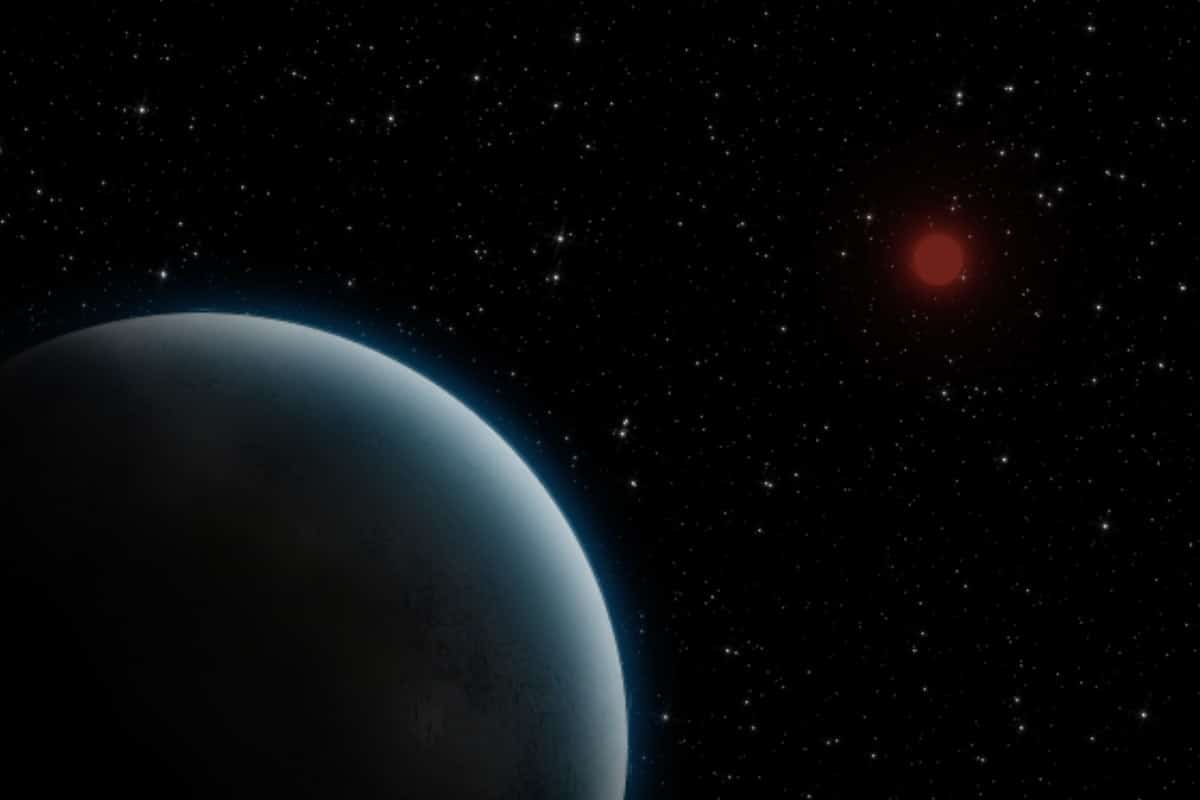
For the first time, the dust disc of such a special celestial body has been mapped. And it turns out that it might actually harbor moons.
A super-Jupiter is an object located on the borderline between a giant planet and a brown dwarf. An example of such a puzzling object is GQ Lupi B. An international team of astronomers led by Leiden University has now mapped the dust disc of this special celestial body for the first time. It leads to the promising speculation that exomaniacs may be born in this disk.
GQ Lupi B
GQ Lupi B is a giant planet or brown dwarf, located in the southern constellation Wolf (Lupus) is located. This so-called super-Jupiter is about 500 light-years away from Earth. GQ Lupi B is much more massive than Jupiter and has a very wide orbit around its parent star. For example, its orbit is more than 20 times wider than the orbit of gas giant Jupiter around our sun. The origin of super-Jupiters is still a great mystery. For example, it is still unclear whether GQ Lupi B formed via a planet-like or star-like route. GQ Lupi B was discovered in 2004 when a high-contrast image of the star GQ Lupi was taken. Since then, astronomers from all over the world have been studying the atmosphere and orbital motion.
With the discovery of new exoplanets, it is not always clear whether they are a planet or a brown dwarf. This is especially difficult to determine with directly observed objects such as GQ Lupi B because their masses are often uncertain. That is why researchers often take it for granted and talk about ‘a giant planet or brown dwarf’ in the same breath. This is also the reason why the ‘B’ in GQ Lupi B is sometimes written with a capital letter (for a brown dwarf) and sometimes with a small letter (for a planet).
In a new study, researchers decided to map the dust disk of GQ Lupi B. For this they used the instruments NACO and MUSE, with which the well-known Very Large Telescope is at ease.
Instruments
Using spectrograph MUSE, the researchers found out that GQ Lupi B is still growing. This is due to the supply of gas from its own disk and possibly also from the disk of the star that this super-Jupiter orbits. But the real discovery came when the team pointed the infrared camera NACO at the object. The astronomers detected infrared radiation emanating from the dust disk. And that’s interesting. According to the team, this means that the disk is much cooler than the super-Jupiter’s hot atmosphere.
Exomaniacs
The researchers think the low temperature indicates a central void in the disk. And that means that the dust there may have been swept away by the formation of moons. It is therefore possible that real exomaniacs can be found in the dust disc of GQ Lupi B. Not such a crazy theory. Astronomers have long suspected that young gas giants and brown dwarfs have a disk of dust orbiting them in which moons can form, similar to the formation of planets in a disk around a young star.
Future research
The last word has certainly not been said on this. Because although the hypothesis about exomoons is of course an interesting one, it could also be that the disk is influenced by a magnetic field from GQ Lupi B. In the future, the researchers hope to study the super-Jupiter disk in more detail. “The James Webb space telescope that will be launched soon offers interesting possibilities,” says research leader Tomas Stolker of Leiden University. “Webb can take spectra at mid-infrared wavelengths. That is not possible from Earth. That way, we could learn a lot more about the physical and chemical processes in the GQ Lupi B disk that might allow the formation of moons.”
The intention is that the James Webb telescope, after a 14-year delay, takes to the skies in December this year. The crowning glory of thousands of scientists, engineers and other experts from more than 14 countries and 29 states who worked with all their might on the ingenious observatory. The final preparations are currently being made and the space telescope is on its way to the European spaceport Kourou. And hopefully when the telescope is finally operational, a lot of mysteries – including those of GQ Lupi B – will be unraveled.
Source material:
“Astronomers see disk around young super-Jupiter where moons may form” – Astronomie.nl
Image at the top of this article: Devon1980 via Wikimedia Commons